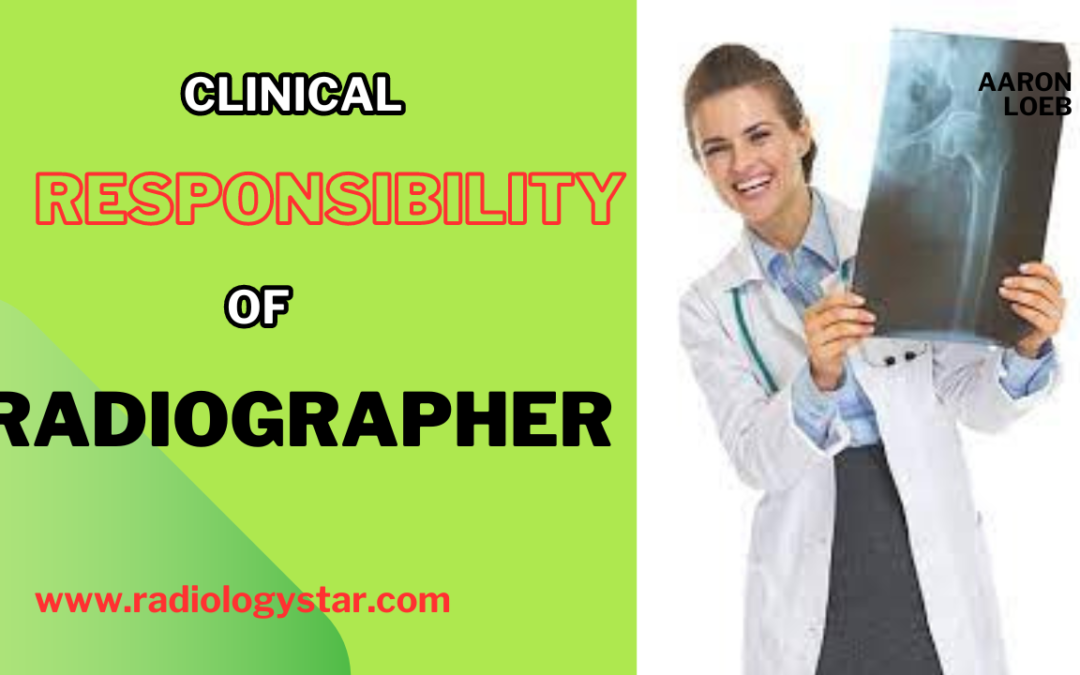What Are The Clinical Responsibilities Of Radiographer ?
The clinical responsibility of radiographer encompass a wide range of tasks, including patient care, imaging procedure performance, and collaboration with other healthcare professionals. Below are the primary responsibilities:
1. Patient Care
A. Patient Preparation:- Ensuring patients are adequately prepared for procedures, including explaining the process, obtaining consent, and addressing any concerns or questions.
B. Patient Positioning:- Properly positioning patients to ensure optimal imaging results while maintaining their comfort and safety.
C. Monitoring Patients:- Observing patients during procedures to ensure their well-being and promptly addressing any adverse reactions or discomfort.
2. Imaging Procedures
A. Performing Imaging Examinations:- Conducting a variety of imaging procedures such as X-rays, CT scans, MRI scans, ultrasound, and mammography according to established protocols and standards.
B. Equipment Operation:- Operating and maintaining imaging equipment, ensuring it is functioning correctly and safely.
C. Image Quality Assurance:- Ensuring images are of high diagnostic quality, adjusting techniques as necessary, and repeating images if required.
3. Technical Responsibilities
A. Radiation Safety:- Applying radiation protection principles to minimize exposure to patients, themselves, and other healthcare workers. This includes proper use of lead aprons, shields, and monitoring devices.
B. Equipment Maintenance:– Regularly checking and maintaining imaging equipment, reporting any malfunctions or needed repairs to ensure uninterrupted service.
4. Administrative Duties
A. Record Keeping:- Maintaining accurate patient records, including documenting procedures performed, images obtained, and any observations or incidents.
B. Compliance with Regulations:- Ensuring all procedures comply with legal and regulatory requirements, including maintaining certifications and staying updated with continuing education.
5. Collaboration and Communication
A. Interdisciplinary Collaboration:- Working closely with radiologists, physicians, nurses, and other healthcare professionals to ensure the best patient outcomes.
B. Professional Development:- Engaging in continuous education and training to stay current with technological advancements and best practices in radiography.
6. Ethical and Professional Conduct
A. Ethical Practice:- Adhering to professional codes of conduct and ethical guidelines, maintaining patient confidentiality, and providing care without discrimination.
B. Professionalism:- Demonstrating a high level of professionalism in interactions with patients, families, and colleagues, and serving as a representative of the healthcare institution.

